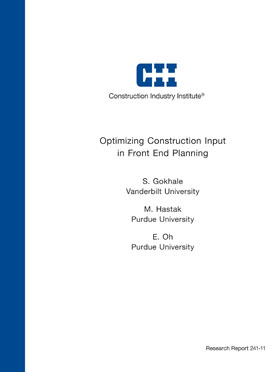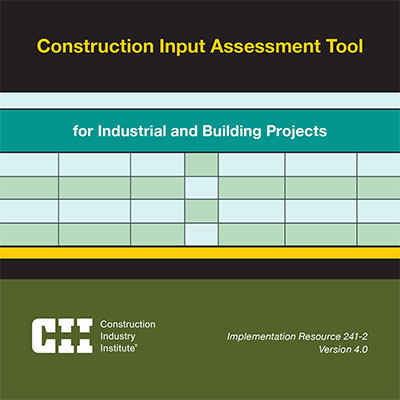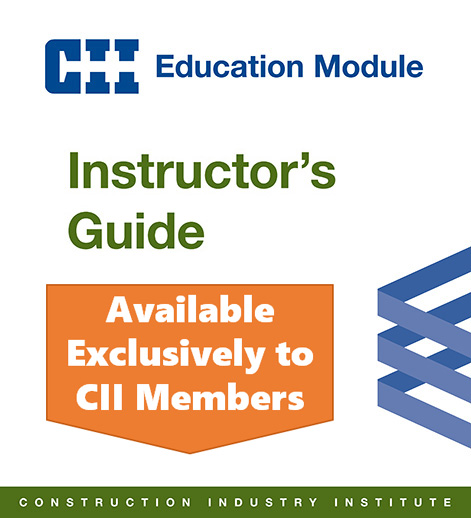
Optimizing Construction Input in Front End Planning
The 321,000-sf, 11-story, Seattle Central Library in downtown Seattle, is arguably the most striking and imaginative piece of architecture since the Space Needle. Dutch architect Rem Koolhass notes that it is one of the most complex buildings he has ever done. The project has won many awards for planning, design, and construction, including: The American Council of Engineering Companies (ACEC) 2005 Platinum Award for excellence in engineering; 2005 Gold Award by ACEC for the technology systems; 2005 American Institute of Architects (AIA) Award for Outstanding Architecture; and a Silver Leadership in Energy and Environmental Design (LEED) certification from the U.S. Green Building Council (USGBC) for incorporating design elements that demonstrate environmental stewardship. What many may not know is that the $159 million, steel and glass, project is consciously economical – at $273 a square foot, the building is half the cost of San Francisco’s public library which had $480 per sf (Seattle Central Library, 2005).
A key element to the project success is attributed to the early involvement by the Owner of a Consultant to gain construction expertise during pre-project planning, that helped guide key decisions in optimizing design approach, and utilization of leading construction practices such as pre-assembly and modularization.
Front End Planning (FEP) or Pre-project planning (PPP) is the process of developing sufficient strategic information for Owners to address risk and to commit resources to maximize the chances for a successful project. In “Optimizing Owner/Contractor Core Competencies for Capital Programs,” Anderson et al. recommend that performance of pre-project planning is an owner responsibility and cannot be completely delegated, although consultants and other expertise may be required to supplement the owner’s staff as in the case of the Seattle Central Library (Anderson et al., 2001).
In the White Paper (WP) issued in August 2004, the Architectural/Construction/ Engineering Productivity Committee of the Construction Users Roundtable (CURT) concluded that the difficulties experienced in typical projects are artifacts of a design and construction process fraught by lack of cooperation and poor information integration (CURT, 2004). The WP suggests that:
- Current project organization, is characterized by operational silos between design, construction, and ownership, and is a barrier to collaboration, because each participant optimizes for its own interest rather than that of the overall project.
- Current contract models, based on traditional practices, institutionalize non-collaborative approaches, perpetuating standards that do not value collaboration.
It appears therefore that while on one hand there is mounting evidence that integration of construction expertise in FEP results in improvement in a project’s FEL, ultimately driving the project’s performance, on the other hand there continue to exist operational silos that prevent true integration of construction expertise in projects. Thus the central questions that need addressing are:
- What is optimum level of construction expertise (contractors &/or consultant) required in FEP for the owner?
- What is a reliable metric to measure the quantity/quality of construction expertise during FEP?
- What are the project organization/contracting strategies needed to facilitate the involvement of the construction expertise in a project?
- What best practices exist that can help breakdown the silos/barriers between the engineering and construction functions?
- Are there best-in-class, projects where a greater involvement of construction expertise in FEP resulted in significant improvements in the construction and commissioning of projects?
- What are the lessons learned from these projects, i.e., what are the key questions and activities that the project leadership needs to focus on, in order to maximize the project performance?
- What is the cost impact of the involvement of construction expertise on early project spending, and on the overall project spending?
Constructability, one of the best practices of CII, has been defined as "the optimum use of construction knowledge and experience in planning, design, procurement, and field operations to achieve overall project objectives."
The benefits of constructability will be obtained through the effective and timely integration of construction input into the planning and design stages. Therefore, construction expertise that require for the entire life-cycle of projects should be involved in the Front End Planning stage to lead to project success. (RR241-11, p. 26)
This research included determining the level of construction input required during Front End Planning. A metric was developed that indicates an optimal level of construction input for a successful project was 70% for both Industrial and Building projects.
RT-241 research revealed that there remain three barriers to the involvement of construction input during the FEP process: (RR241-11, p. 89)
- Project Organization
- Contract Models
- Decision Aids
Primary stakeholders in a construction project, owner, designer, and constructor, work in separate domains based on their particular expertise. As the team member who has the best information about the project objectives, the owner becomes the party tasked with assembling the project team.
Traditional contract models for addressing design and construction processes reinforce the compartmentalization of owner, designer, and constructor.
Tools to aid the owner in making early stage decisions are not readily available. Often owner must rely on in-house resources that may not have in-depth knowledge of activities required to achieve the owner’s objectives.



